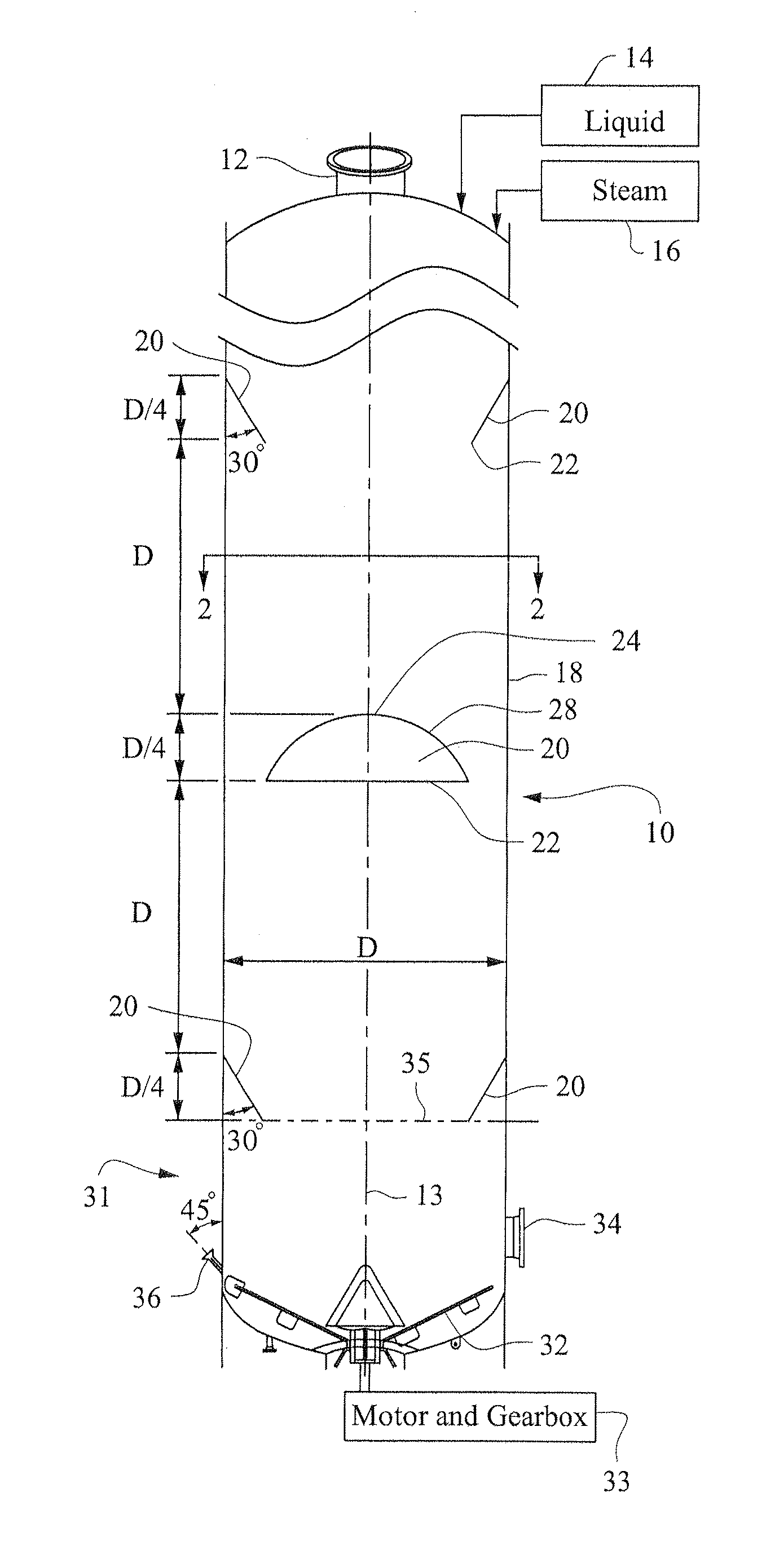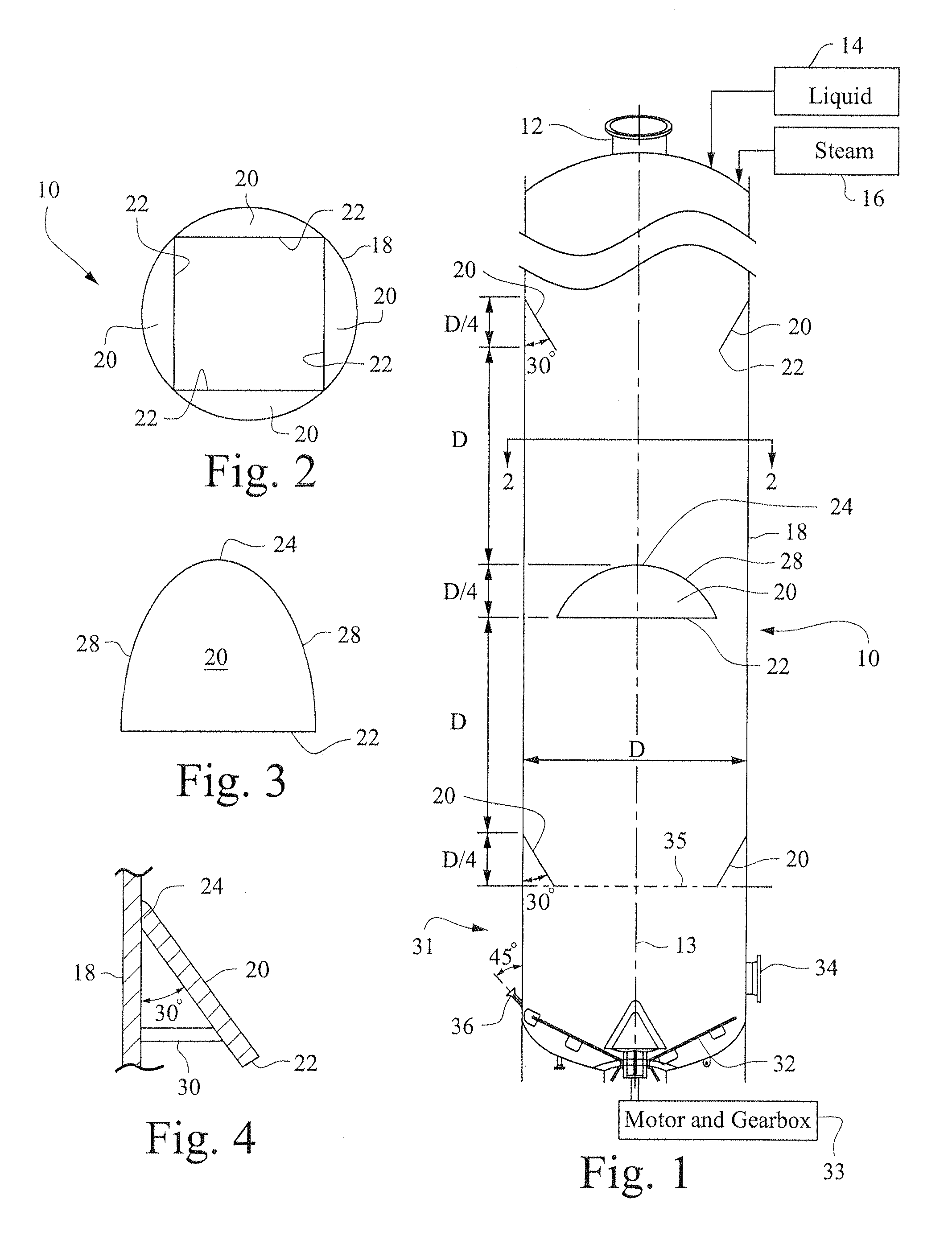Reactor vessel having single convergence sidewall plates
a technology of sidewall plates and reactor vessels, which is applied in the direction of gas-gas reaction processes, liquid-gas reactions of thin-film type, and other chemical processes, can solve the problems of increasing the energy required to operate the discharge device, affecting and affecting the stability of the reactor vessel. , to achieve the effect of facilitating the downward movement of biomass
- Summary
- Abstract
- Description
- Claims
- Application Information
AI Technical Summary
Benefits of technology
Problems solved by technology
Method used
Image
Examples
Embodiment Construction
[0028]FIG. 1 is a cross-sectional view taken along a vertical plane of a reactor vessel 10 having an upper inlet 12 for biomass, such as annual plant biomass. FIG. 2 shows in cross-section along a horizontal plane the vessel 10 from a top down viewpoint.
[0029]The vessel 10 may be adapted to process annual plant biomass, such as straw. The upper inlet 12 may include a top separator, screw conveyor or other transport mechanism to move biomass into the reactor vessel. Liquid, such as water or clear liquor, may be added to the top of the vessel with the incoming flow of biomass or through a liquid inlet 14. Steam or another heated gas may be added to the vessel, such as through heat inlet 16. The steam or other gas may also be added to elevate the pressure in the vessel to an internal pressure above atmospheric, such as 10 to 20 psig or greater.
[0030]The reactor vessel 10 is illustrated in FIG. 1 as having a constant diameter (D) and oriented vertically along a vertical axis 13. The rea...
PUM
| Property | Measurement | Unit |
|---|---|---|
| angle | aaaaa | aaaaa |
| angle | aaaaa | aaaaa |
| diameter | aaaaa | aaaaa |
Abstract
Description
Claims
Application Information
 Login to View More
Login to View More - R&D
- Intellectual Property
- Life Sciences
- Materials
- Tech Scout
- Unparalleled Data Quality
- Higher Quality Content
- 60% Fewer Hallucinations
Browse by: Latest US Patents, China's latest patents, Technical Efficacy Thesaurus, Application Domain, Technology Topic, Popular Technical Reports.
© 2025 PatSnap. All rights reserved.Legal|Privacy policy|Modern Slavery Act Transparency Statement|Sitemap|About US| Contact US: help@patsnap.com


